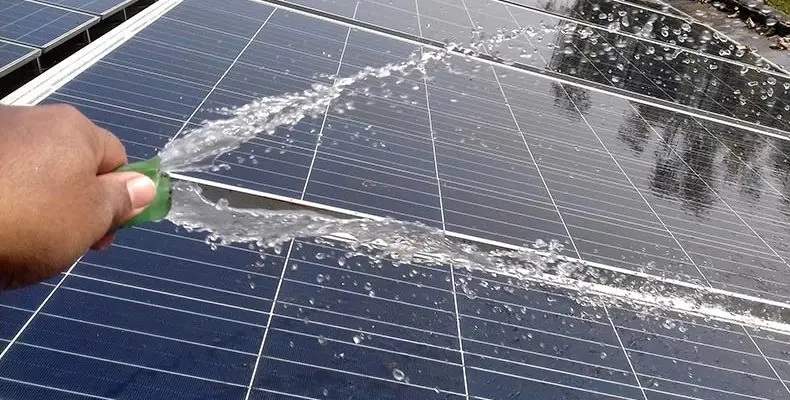Solar panels are often coated with a protective layer to enhance their performance and durability. The coating serves several purposes, including protecting the solar cells from environmental factors, improving light absorption, and reducing reflections.
- Anti-Reflective Coating (ARC):
- Anti-reflective coatings are applied to the surface of solar panels to reduce the reflection of sunlight. This helps to maximize the amount of sunlight that can penetrate the protective glass and reach the solar cells. By minimizing reflection, more light is absorbed, leading to increased energy conversion efficiency.
- Hydrophobic Coating:
- Hydrophobic coatings are designed to repel water. They prevent water droplets from forming on the surface of the solar panels, allowing rain to wash away dust and dirt more effectively. This helps to maintain the transparency of the panel, ensuring that sunlight can reach the solar cells without obstruction.
- Anti-Soiling Coating:
- Anti-soiling coatings are formulated to reduce the accumulation of dust, dirt, and other contaminants on the surface of solar panels. This helps to maintain the efficiency of the solar cells over time by preventing the buildup of materials that could block sunlight.
- Scratch-Resistant Coating:
- Solar panels are often exposed to various environmental elements, including wind-blown debris. Scratch-resistant coatings are applied to the glass surface to protect against minor scratches and abrasions, preserving the transparency of the panel and preventing damage to the solar cells.
- UV-Protective Coating:
- Ultraviolet (UV) protective coatings are used to shield solar panels from the harmful effects of prolonged exposure to sunlight. These coatings help prevent the degradation of materials over time, ensuring the longevity of the solar panel.
- Durable Encapsulation Materials:
- In addition to surface coatings, solar panels are encapsulated with durable materials, often ethylene-vinyl acetate (EVA) or other polymers, to protect the internal solar cells from moisture, temperature variations, and mechanical stress. This encapsulation enhances the structural integrity and reliability of the solar panel.
The choice of coatings depends on factors such as the intended application, environmental conditions, and the desired performance characteristics of the solar panel.


